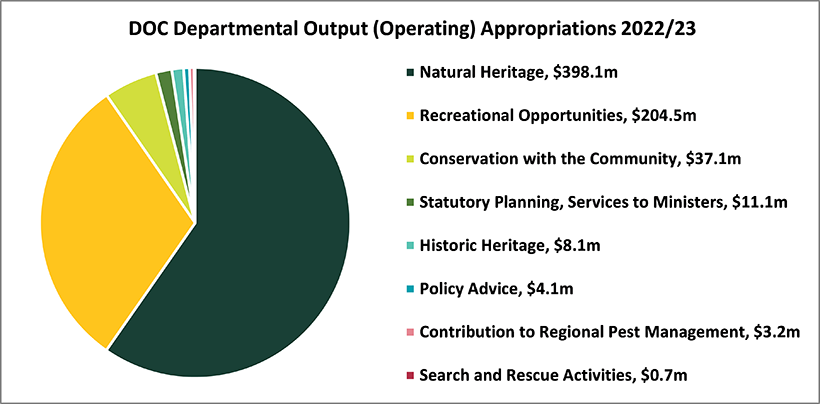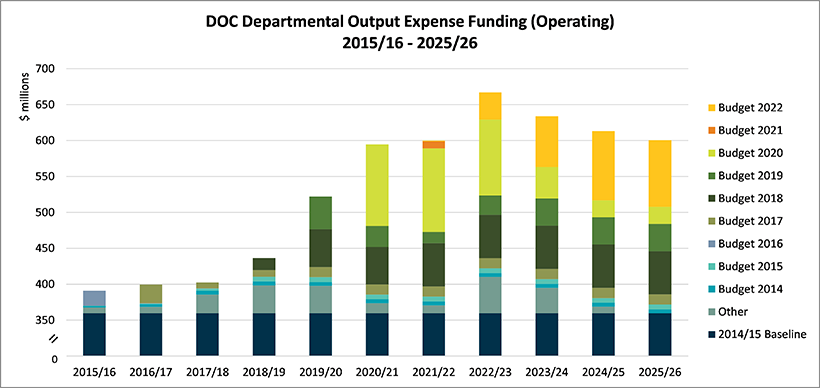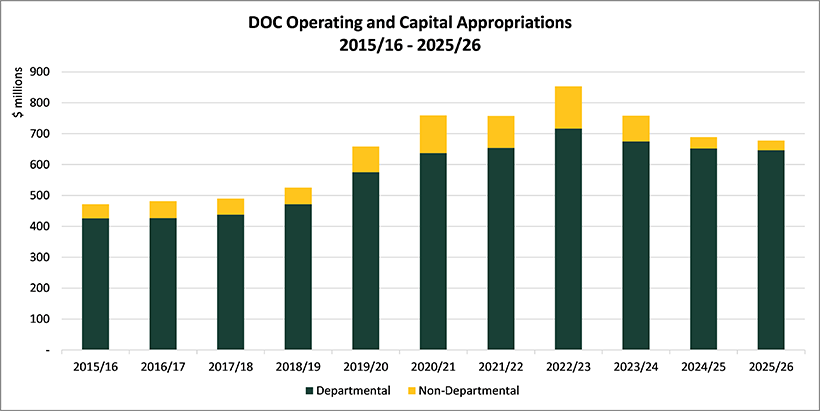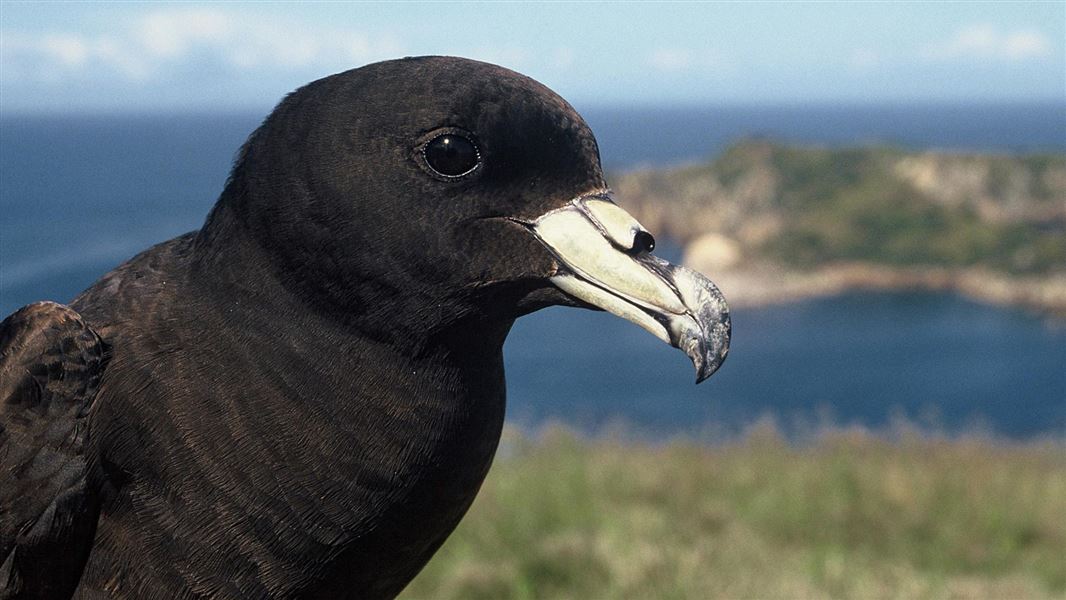Archived content: This media release was accurate on the date of publication.
Date: 19 May 2022
Budget 2022 provides an extra $374m of operating funding and $26m of capital funding to DOC to significantly progress implementation of the Aotearoa New Zealand Biodiversity Strategy, and to help New Zealand achieve its future carbon goals.
This will improve marine protection, boost predator control for threatened native species and establish a new national programme for deer management and goat control to protect and restore native forests.
There’s new funding to maintain high quality visitor assets and experiences, including tracks, huts and campsites, to make them more resilient to natural hazards and extreme weather events.
Budget 2022 conservation initiatives
- Implementing the Aotearoa New Zealand Biodiversity Strategy:
- Collective delivery of the Predator Free 2050 Strategy ($64m)
- Deer management and goat control ($30m)
- Maintaining National Predator Control Programme levels ($27m)
- Reducing extinction risk for key flagship marine species ($7m)
- Implementation of marine protection and localised management actions ($14m)
- Carbon emissions reduction ($3m)
- Visitor asset management ($60m)
- Protecting our cultural heritage ($13m)
- Addressing inflationary and wage pressures (tagged contingency)
- Corporate property remediation and maintenance ($25m)
- Whakapapa Three Waters infrastructure (tagged contingency)
- Electric vehicles ($10m)
- Cyclone Dovi recovery (tagged contingency)
- Dolomite Point Redevelopment Project ($3m).
DOC's 2022/23 departmental appropriations
DOC’s departmental output appropriations have increased by $67m, from $600m in 2021/22 to $667m in 2022/23.
DOC has secured a significant baseline uplift through to 2025/26. This is the single largest baseline investment in DOC since Budget 2018, outside of the Jobs for Nature programme.
In recent years there has been significant investment in conservation through Jobs for Nature ($501.8 million over four years as part of the Government’s $1.2 billion Jobs for Nature programme). DOC also had increases built into its baseline in Budgets 2017 and 2018. Budget 2019 was more modest, but allowed for DOC’s security, health and safety systems to be strengthened.
The decrease in concessions revenue and recreation revenue caused by the COVID-19 pandemic is still having an impact on DOC’s baseline and will continue to do so until revenue recovers to pre-COVID levels. New funding is ring-fenced to fund new initiatives and address specific cost pressures, therefore this funding cannot be used to offset the cost pressures caused by the decrease in revenue.
The following chart shows DOC’s departmental appropriations in 2022/23:

DOC departmental output (operating) appropriations 2022/23:
- Natural heritage, $398.1m
- Recreational opportunities, $204.5m
- Conservation with the community, $37.1m
- Statutory planning, services to Ministers, $11.1m
- Historic heritage, $8.1m
- Policy advice, $4.1m
- Contribution to regional pest management, $3.2m
- Search and rescue activities, $0.7m
Overview of departmental output expense funding over time
The following chart shows funding received over the past seven years above the 2014/15 baseline. It includes Budgets 2014 – 2022. The most significant funding uplifts secured were:
- Budget 2020, which included the Government’s COVID-19 response Jobs for Nature package of $501.8m over four years, and
- Budget 2022, which included $400m of capital and operating funding through to 2025/26. $298m of which is for departmental output expenditure excluding tagged contingent funding.

Chart and table notes:
- ‘Other’ budget movements include changes to third party and crown concessions revenue, and baseline transfers and adjustment since 2014/15
- The Department’s funding from 2022/23 onwards is per Main Estimates 2022/23 and is subject to change pending future budgets and baseline adjustments.
- Tagged contingency funding has been excluded.
The following initiatives were included at each Budget (the dollar amounts refer to the first four years of funding):
| Budget | Initiative |
|---|---|
| Budget 2022 | Implementing the Aotearoa New Zealand Biodiversity Strategy 2020: Collective delivery of the Predator Free 2050 Strategy ($61.6m) |
| Addressing inflationary and wage pressures ($53.7m) | |
| Fit for purpose recreation assets ($32.4m) | |
| Implementing the Aotearoa New Zealand Biodiversity Strategy: Ramping up deer management and goat control ($30.0m) | |
| Legislative and regulatory compliance ($28.0m) | |
| Maintaining National Predator Control Programme Levels ($26.9m) | |
| Corporate Property – Remediation and Maintenance of Residential and Commercial Properties and Associated Infrastructure ($25.0m) | |
| Protecting our cultural heritage ($13.2m) | |
| Implementation of marine protection and localised management actions ($12.0m) | |
| Reducing extinction risk for key flagship marine species ($7.1m) | |
| Passenger Vehicle Electrification Project ($5.0m) | |
| Maximising carbon storage: Increasing natural sequestration to achieve New Zealand’s future carbon goals ($3.4m) | |
| Budget 2021 | Preserving Concession Funding ($10.0m) |
| Budget 2020 | Jobs for Nature: Kaimahi for nature ($200.0m) |
| Jobs for Nature: Restoring nature ($154.3m) | |
| Jobs for Nature: Protecting nature ($147.5m) | |
| Ngāi Tai Supreme Court Decisions ($7.9m) | |
| Southern South Island flood recovery contingency ($4.0m) | |
| Budget 2019 | International Visitor Levy ($106.2m) |
| Improving safety and security ($10.7m) | |
| Provincial Growth Fund ($0.3m) | |
| Budget 2018 | Predator control ($81.3m) |
| Biodiversity contingency ($76.0m) | |
| Organisational capability ($16.2m) | |
| Visitor management ($5.5m) | |
| Biodiversity in Mackenzie Basin ($2.6m) | |
| Budget 2017 | Tourism infrastructure - maintenance ($33.1m) |
| Tourism growth initiative - new walks ($11.5m) | |
| Battle for Our Birds ($21.3m) | |
| Port Hill fires ($4.8m) | |
| Marine protection and development ($0.8m) | |
| Regional Growth Programme ($0.4m) | |
| Predator control ($81.3m) | |
| Budget 2016 | Battle for our Birds ($20.7m) |
| Funding for Game Animal Council ($0.6m) | |
| Budget 2015 | Save Our Iconic Kiwi ($11.2m) |
| Budget 2014 | Kauri dieback ($16.4m) |
Trend in DOC’s appropriations
Vote Conservation has two main components:
- Departmental spending, which includes DOC's operating and capital budget
- Non-departmental spending, which DOC spends on behalf of the Crown, e.g. grants to community conservation funds and the protection of biodiversity on private and Māori land.

The graph above shows how DOC’s departmental appropriations (including operating and capital) and non-departmental appropriations (including operating and capital) have changed over time.
The increases in departmental and non-departmental appropriations since 2019/20 have been driven by the Covid Recovery and Relief Funds received at Budget 2020. This includes the Jobs for Nature initiatives and the Wildlife Institutions Relief Fund, and initiatives funded through the Budget 2022 Natural Resources Cluster process.
As the Covid Recovery and Wildlife Institutions Relief Funding is time limited the graph shows decreases to appropriations by 2024/25.
